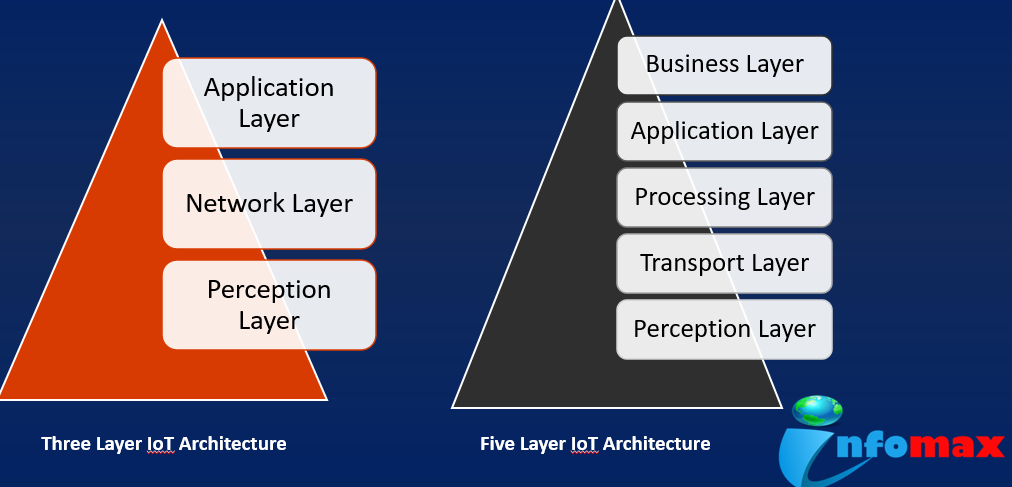IoT architecture and levels
IoT architecture and levels
- IoT architecture shows the building blocks of an IoT system and how they are connected to collect, store and process data.
- IoT architecture also contains device and user management components to provide stable and secure functioning of things and control user access issues.
- The most basic architecture is a three-layer architecture which introduced in the early stages of research in this area.
- But it is not sufficient for research on IoT because research often focuses on finer aspects of the internet of things.

Perception(recognition) Layer
- This layer is the physical layer, which has sensor for sensing and gathering information about the environment.
- One of the important function of this layer is that it linked and converts the information gathered by the sensors into digital signals which are further transferred to the Network layer.
- Example : The smart phone itself has many type of sensors embedded in it such as the location sensor(GPS), movement sensor(accelerometer, gyroscope), camera, light sensor, microphone, proximity sensor, and magnetometer.
Network Layer
- The Network layer is responsible for connecting to other smart things, network devices, and servers.
- The function of this layer are to receive and transmit the digital data to the processing (middleware) layer.
- These data are transmitted onto the middleware layer over some transmission medium such as WI-FI,4G and GSM etc along with protocol like IPv4,DDS etc.
Processing Layer
- The data that are received from the network layer is processed in this layer.
- This layer uses the technologies like cloud computing, big data processing etc.
- The processing layer is also known as the Middleware Layer.
Application Layer
- This layer is responsible for delivering application specific services to the user.
- It define various application in which the IoT can be deployed, based on the processed data.
- Example:
- Smart phone, smart watch etc.
Business Layer
- This layer acts as the manager for the application and services of the IoT
Qus. 1 : The RFID is a useful IoT architecture layer of the perception layer for
- Object identifying
- Tracking
- Exchanging useful information
- All of the above
- Perception layer
- Network layer
- Application layer
- None of the above
- Object identifying
- Tracking
- Exchange useful information
- All of the above
- IPv6 over Low Power Wireless Personal Area Network
- IPv4 over Low Power Wireless Private Area Network
- IPv6 over Low Energy Wire Personal Area Network
- IPv4 over LongRange Wireless Private Area Network
- PaaS
- IoT Service Provider
- SaaS
- IaaS
- Sensing Layer
- Application Layer
- Network Layer
- Processing Layer
- Application Layer
- Processing Layer
- Transport Layer
- Perception Layer
- Transport Layer
- Processing Layer
- Perception Layer
- Business Layer
- Smart Devices
- Gateway
- Cloud
- Service Management
- IoT makes the connected technology, product, or services to active engagement between each other.
- It makes the complete failure of the system.
- IoT makes things smart and enhances life through the use of data.
- None of the above
- Mobile unified service
- Urban Application plateform
- Management center
- Integrated Information Provider
- Eclipse IOT
- Red Hat
- Intercloud
- Bot 2 Bot
- Service Integration
- Service repository
- Business Logic
- Data Sensing and actuation protocols
- Communication
- Device
- Service
- All of the mentioned
- Logical design
- Physical design
- Both of these
- None of these
- Sensor/actuators, data acquisition, edge IT, data center/cloud
- data acquisition, Sensor/actuators, edge IT, data center/cloud
- Sensor/actuators, data acquisition, data center/cloud, edge IT
- Sensor/actuators, edge IT, data acquisition, data center/cloud